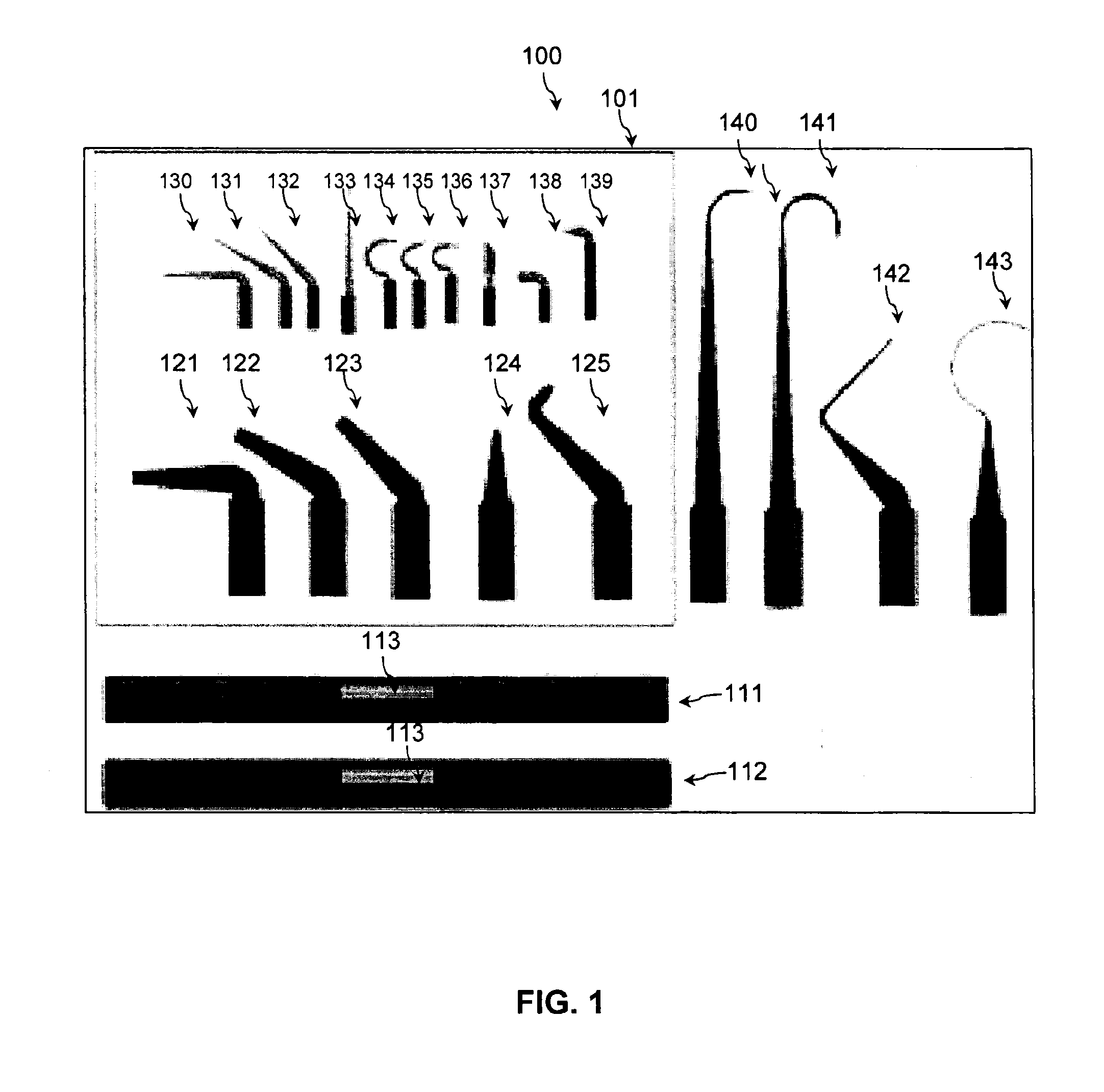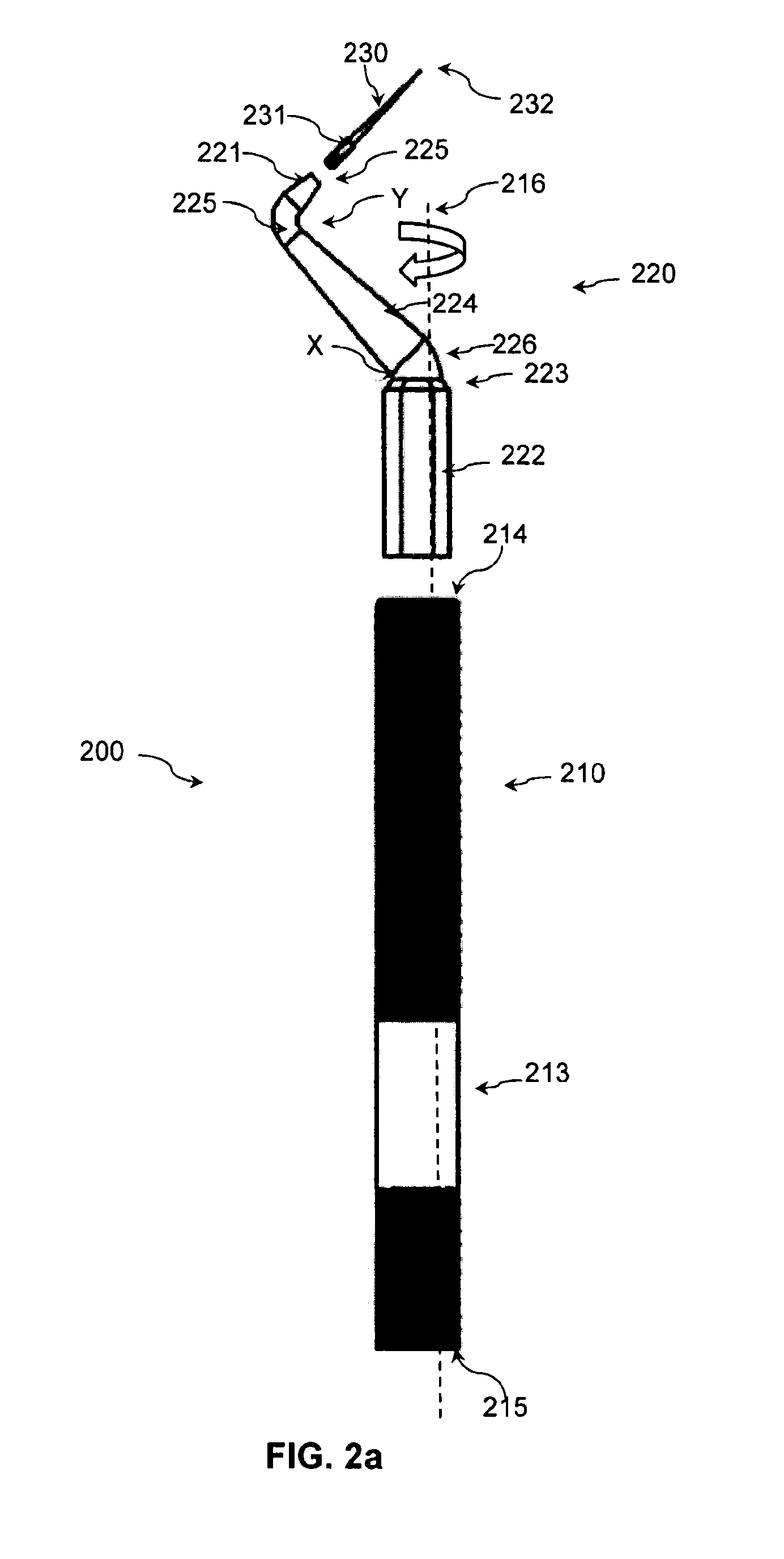Adjustable dental hand instrument
a hand instrument and adjustable technology, applied in the field of adjustable dental hand instruments, can solve the problems of reducing the durability of the instruments and increasing the risk of accidents
- Summary
- Abstract
- Description
- Claims
- Application Information
AI Technical Summary
Benefits of technology
Problems solved by technology
Method used
Image
Examples
Embodiment Construction
[0054]Referring now to the drawings, wherein like reference numerals designate identical or corresponding parts throughout the several views.
[0055]Dental professionals like dentists, dental hygienists and dental assistants depend upon many different instruments to perform dental work. These instruments include but are not limited hand instruments that are used for cavities removal, adjusting the filling cavity, and placing the filling. These hand instruments are different from those used for ultrasonic or machine rotary instruments. As a result, dental professionals can sometimes use a large number of instruments to conduct a single dental procedure each time. Some of these instruments are barely used in the mouth for testing size compatibility to the procedure to be done. Sometimes, multiple similar instruments are found as different sizes or different angulation to be used for right or left positions, or to be used in inaccessible areas. This increases the burden of having to buy ...
PUM
 Login to View More
Login to View More Abstract
Description
Claims
Application Information
 Login to View More
Login to View More - R&D
- Intellectual Property
- Life Sciences
- Materials
- Tech Scout
- Unparalleled Data Quality
- Higher Quality Content
- 60% Fewer Hallucinations
Browse by: Latest US Patents, China's latest patents, Technical Efficacy Thesaurus, Application Domain, Technology Topic, Popular Technical Reports.
© 2025 PatSnap. All rights reserved.Legal|Privacy policy|Modern Slavery Act Transparency Statement|Sitemap|About US| Contact US: help@patsnap.com



